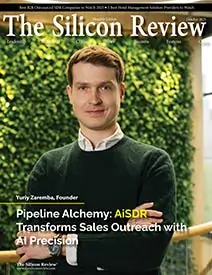>>
Industry>>
Gaming and vfx>>
Digital Fur and Fairy Dust: Ho...Digital Fur and Fairy Dust: How VFX Automation Is Redefining Fantasy Filmmaking
The Silicon Review
21 April, 2025
The astonishing VFX work behind Wicked, driven by SCAD alum Ryan Gillis and ILM’s automation pipeline, signals a new era where industrial-grade automation meets storytelling precision.
Industrial automation isn't confined to factory floors anymore—it’s quietly revolutionizing digital artistry in high-stakes Hollywood productions. The latest testament? Universal Pictures’ Wicked, where hyper-detailed creature design meets cutting-edge visual effects pipelines. At the center of this technological confluence is Ryan Gillis, a SCAD alumnus and ILM’s Groom and VFX Supervisor, who led the creation of digitally complex characters like Dulcibear, the AI-assisted nanny-bear, and the enigmatic Wolf Doctor. These aren’t just characters; they’re engineered performances made possible through advanced grooming software, procedural automation, and scalable rendering systems. Dulcibear’s lifelike fur, which reacts dynamically to movement and lighting, wasn’t hand-animated frame by frame. Instead, automation workflows—fine-tuned over years at ILM—handled thousands of micro-tasks per sequence, drastically reducing manual labor while preserving creative nuance.
The challenges extended beyond fur physics. Bringing Elphaba to life as a green infant required real-time deformation tools and multi-layer skin shaders that adapted dynamically during performance capture. These tools, often integrated with industrial-grade automation platforms, enabled ILM’s team to manage complexity at scale—streamlining revisions, maintaining consistency, and accelerating delivery timelines without sacrificing visual integrity. This evolution in VFX production not only improves throughput but redefines budget expectations and scalability for future large-scale fantasy films. As automation penetrates deeper into creative pipelines, studios can achieve both cost control and artistic ambition—an intersection that’s quickly becoming the new industry benchmark.
For professionals in the gaming and VFX sectors, the takeaway is clear: automation isn’t replacing creativity—it’s expanding its reach. Investing in procedural workflows, AI-powered grooming systems, and hybrid rendering infrastructure is no longer optional but essential to remain competitive in an increasingly immersive media ecosystem. In short, Wicked isn’t just magical on screen—it’s a case study in how intelligent automation is shaping the visual future of storytelling.


_2025-11-17_06-38-14.webp)

 (1)_2025-10-21_13-35-14.webp)

_2025-10-02_10-21-48.webp)